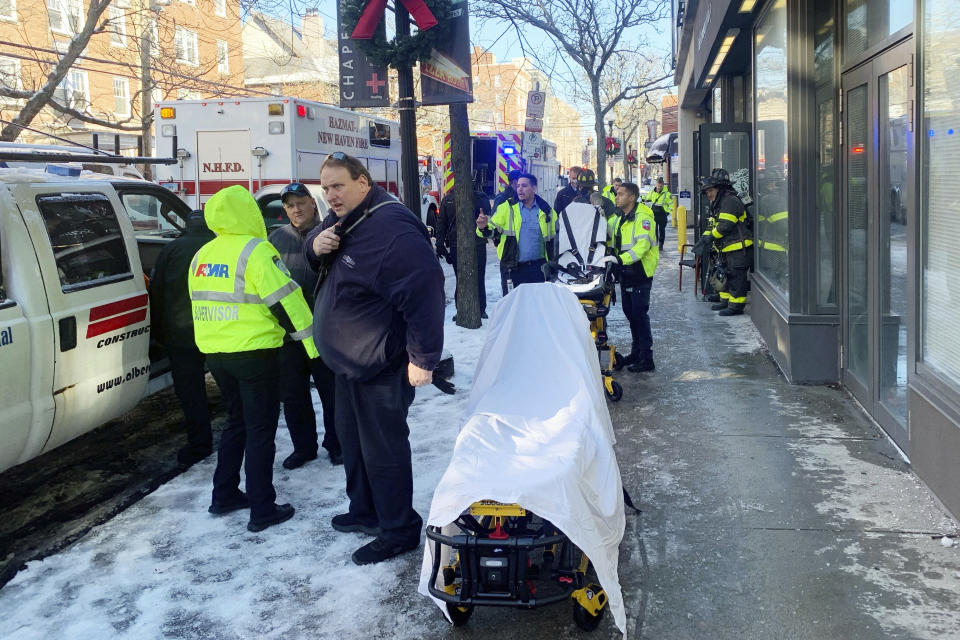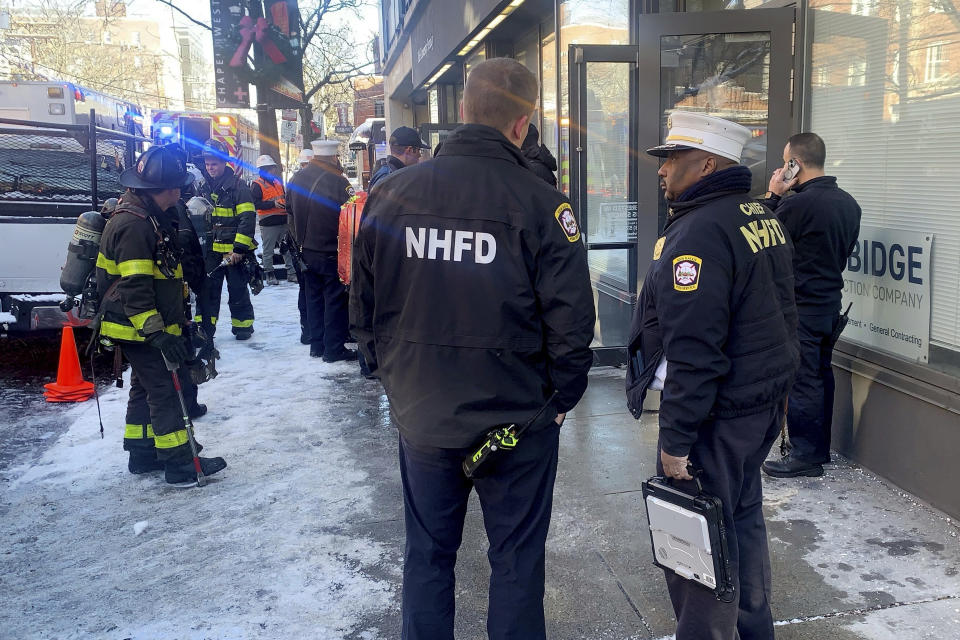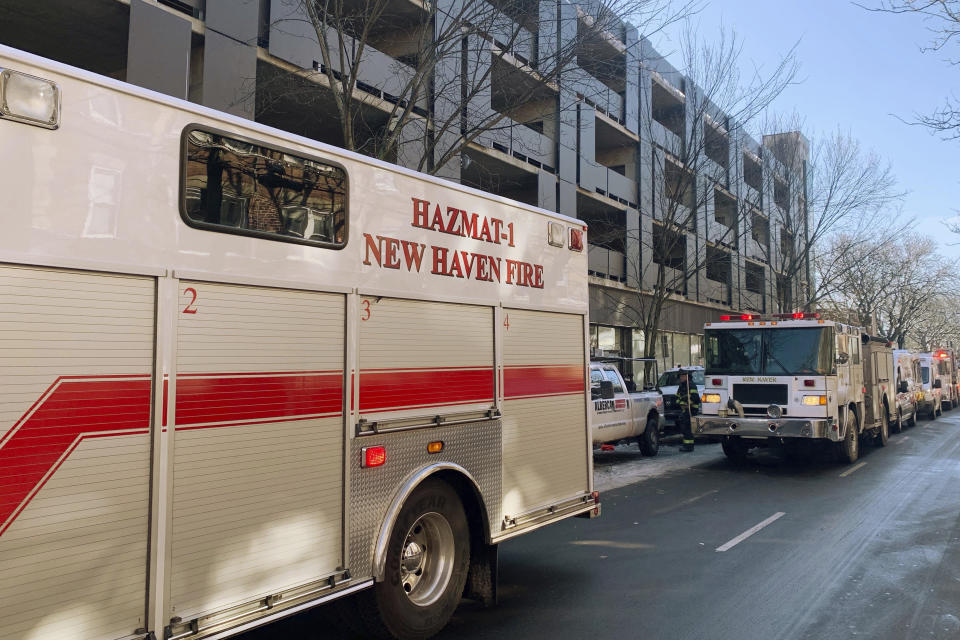14 workers, including some renovating a Yale building, hospitalized for carbon monoxide poisoning
NEW HAVEN, Conn. (AP) — Blood tests of a construction worker who collapsed Wednesday outside a building owned by Yale University led emergency crews to uncover potentially lethal levels of carbon monoxide inside. Another 13 people were hospitalized, but the discovery may have prevented a much larger catastrophe, officials said.
“There was a disaster averted here,” said Rick Fontana, New Haven’s emergency operations director. “You could have had a lot more sick or a lot more death had this gone on for a longer period of time.”
Emergency crews initially thought they were responding to a “regular medical call” Wednesday morning when they brought the collapsed unconscious man to the hospital, Fontana said. However, an hour-and-a-half later, the hospital informed them that the worker had extremely high levels of carbon monoxide in his bloodstream.
Crews then returned to the location and found 13 people at the building with elevated carbon monoxide levels and complaining of headaches. It was later determined that the construction workers had been using a propane-fueled saw to cut concrete inside the structure. Even though they were venting it, Fontana said the fumes were not exiting the building.
Of the 14 people who were hospitalized, nine were construction workers and five were members of Yale Security Department, which is located in the same facility, said a spokesperson for Mayor Justin Elicker.
The man found lying outside of the building, which is a couple of blocks from Yale's New Haven campus, was taken to Jacobi Medical Center's hyperbaric chamber in the Bronx, New York City, where he was in critical condition, Fontana said. He said another worker was also in “pretty serious condition” but was uncertain where he was taken.
“That carbon monoxide, it’s not like you could smell it or see it or feel it,” he said. “Everybody thought that it was being vented properly until we were notified of this group of people.”
Fontana said a typical home carbon monoxide detector sounds an alarm when it detects 35 parts per million. In this situation, there were 350 parts per million, or 10 times the permissible level.
Inhaling carbon monoxide fumes hinders the body from properly using oxygen and can harm organs, including the heart and brain.
The Occupational Safety and Health Administration is investigating the incident. A Yale spokesperson said in an email it took about a half-hour for carbon monoxide levels in the building to reach a safe level. Yale first responders also checked adjacent areas but did not detect any of the gas.
___
This story was updated to correct that only nine of the 14 people who were hospitalized are construction workers. The other five are Yale employees. The first victim was taken to a hospital in the Bronx not Brooklyn, N.Y.




